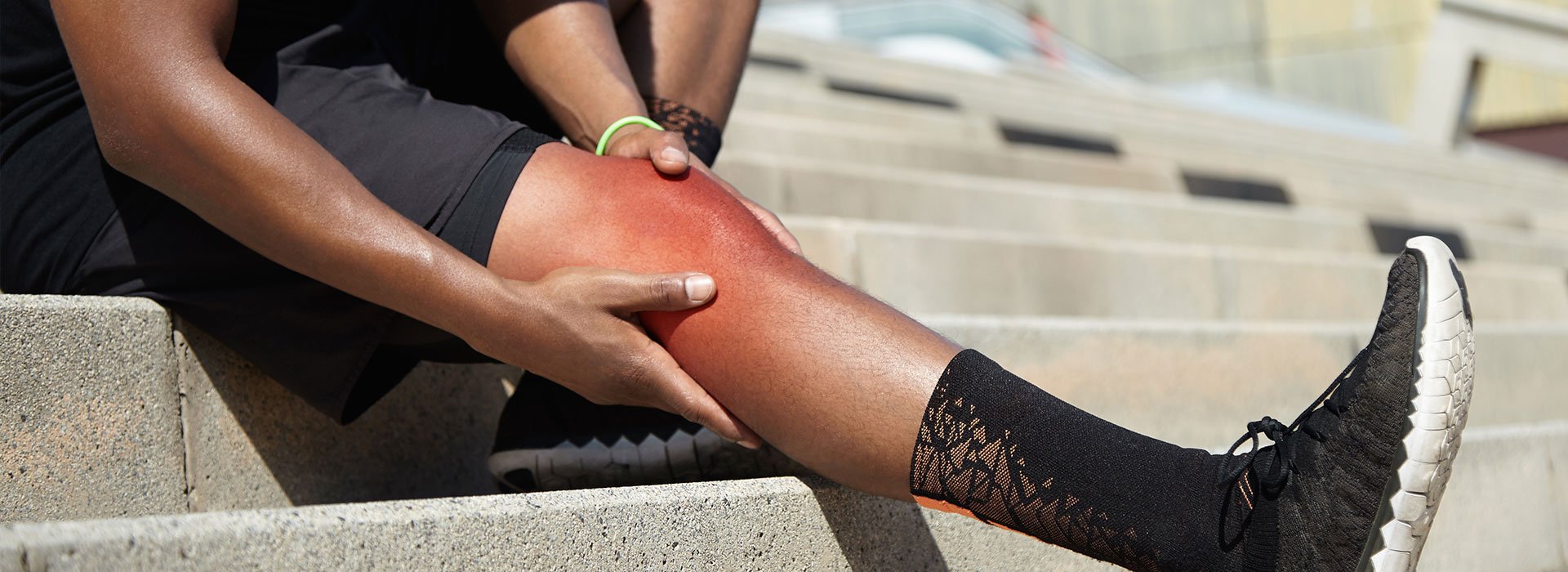
Patellar Tendon Rupture
Patellar Tendon Rupture
The patellar tendon is a strong piece of tissue at the bottom of the patella (kneecap) that connects the patella to the tibia (shin) bone. By connecting the patella to the tibia, the patellar tendon allows us to bend and straighten our leg. Without a functional patellar tendon, it can be very difficult to walk, run, jump, or perform any basic maneuvering.
Orthopedic Surgeon and Sports Medicine specialist, Dr. Jonathan Koscso, successfully diagnoses and treats patients in Sarasota, FL and the surrounding Gulf Coast region who have experienced a patellar tendon rupture.
Causes of Patellar Tendon Rupture
Patients who sustain a rupture of the patellar tendon will often report a traumatic episode such as a fall, buckling, or forced knee flexion. Ruptures of the patellar tendon will also commonly occur in active middle-aged patients who are involved in jumping and running. As we age, our tendons can degenerate and fray, predisposing us to tendon rupture with vigorous activity. Persons with pre-existing patellar tendinitis (inflammation of the patellar tendon) are also at increased risk of patellar tendon rupture. In some people, the presence of a pre-existing condition such as rheumatoid arthritis, diabetes mellitus, infection, and chronic renal failure can weaken the patellar tendon and predispose to rupture. Use of certain medications such as steroids and some antibiotics can also weaken the patellar tendon and predispose individuals to rupture of the tissue.
Symptoms of a Patellar Tendon Rupture
Patellar tendon ruptures are often associated with the sensation of a “pop” in the knee at the bottom of the kneecap. Commonly, patients with a tear of the patellar tendon will have difficulty straightening the knee from a seated position or lifting the leg in the air when it is fully straight.
To diagnose a patellar tendon rupture, Dr. Koscso will perform a comprehensive medical history and physical examination of the involved extremity, emphasizing the ability of the patient to perform a straight-leg raise and evaluating quadriceps strength. Inability to perform these functions will often indicate a patellar tendon rupture. In the majority of people with this type of injury, there will be a physical defect in the area where the tendon attaches to the kneecap. Dr. Koscso will palpate for this defect as another indication of injury.
In most cases further imaging will be performed in order to confirm the diagnosis. An x-ray of the knee is an important initial study to confirm that there are no fractures or other bone abnormalities. Ultimately, an MRI of the knee is the best diagnostic study for confirming rupture of the patellar tendon. If a patient has a medical problem which prevents an MRI, an ultrasound of the knee can also be very effective in providing confirmation.
Non-Surgical Treatment of a Patellar Tendon Rupture
Patients who sustain a patellar tendon rupture will likely immediate note swelling and pain throughout the knee. Initial management of these symptoms includes rest, ice, and elevation of the extremity. Non-steroidal anti-inflammatory drugs (ibuprofen, naproxen, meloxicam, etc.) are also helpful for swelling and pain management. Ultimately, patients should seek immediate evaluation by an experienced knee surgeon, as diagnosis of a complete tear often requires expedited surgical treatment.
Some patients with partial-thickness tears of their patellar tendon may be managed through nonoperative interventions including the above measures as well as an appropriate course of physical therapy to regain knee range of motion and strength. Many tears, however, require surgical intervention to restore the native anatomy of the tendon attachment to the patella.
Surgical Treatment of a Patellar Tendon Rupture
Most patients with patellar tendon ruptures, especially those with full-thickness (complete) tears, will require repair of the injured tendon back to its patellar attachment. This is performed through a small incision over the anterior (front) aspect of the knee. To perform this operation, Dr. Koscso will pass multiple high-strength sutures through the remaining tendon stump. These sutures are then loaded into specialized surgical anchors which are fixated into the patella bone under appropriate tension. Postoperatively, patients are placed into a hinged knee brace with the leg in full extension to protect the repair.
Graphical representation of a patellar tendon repair using high-strength sutures through the tendon which are then fixated into specialized anchors in the patella.
Post-Operative Recovery
For a comprehensive reading of the expected post-operative recovery, including restrictions, physical therapy progressions, and return to work/sport guidelines after patellar tendon repair surgery, please see our corresponding protocol on our physical therapy protocols page.
About the Author
Dr. Jonathan Koscso is an orthopedic surgeon and sports medicine specialist at Kennedy-White Orthopaedic Center in Sarasota, FL. Dr. Koscso treats a vast spectrum of sports conditions, including shoulder, elbow, knee, and ankle disorders. Dr. Koscso was educated at the University of South Florida and the USF Morsani College of Medicine, followed by orthopedic surgery residency at Washington University in St. Louis/Barnes-Jewish Hospital and sports medicine & shoulder surgery fellowship at the Hospital for Special Surgery in New York City, the consistent #1 orthopaedic hospital as ranked by U.S. News & World Report. He has been a team physician for the New York Mets, Iona College Athletics, and NYC’s PSAL.
Disclaimer: All materials presented on this website are the opinions of Dr. Jonathan Koscso and any guest writers, and should not be construed as medical advice. Each patient’s specific condition is different, and a comprehensive medical assessment requires a full medical history, physical exam, and review of diagnostic imaging. If you would like to seek the opinion of Dr. Jonathan Koscso for your specific case, we recommend contacting our office to make an appointment.




